Description de l'Egypte; ou Recueil des Observations et des Recherches, qui ont été faites en Egypte pendant l'Expédition de l'Armée Française. Paris: l'Imprimerie Impériale, 1809-1813; l'Imprimerie Royale, 1817-[1830]. 29 volumes only, comprising 17 bound volumes only of text, 2° (397 x 262mm), 11 volumes of plates (format 'Jesus') and one volume containing the 'préface historique' and 'explication des planches,' large 2° (713 x 535mm). The plate volumes containing: 891 engraved views, plates and maps, some hand-coloured or printed in colours and finished by hand; the grande-format plates bound in as required. Further plates in text. (Lacking 3 text vols.: vol. I and parts of vol. II of the 'Antiquitées Descriptions,' and vol. I, part I, of the 'Antiquitées-Mémoires,' some spotting and occasional offsetting of plates, one plate cleanly torn, a few text leaves browned.) Mixed bindings: the text volumes uncut in original blue mottled wrappers with paper spine labels (a little rubbed, one label torn with loss), the plate volumes in contemporary green parchment-backed marbled boards, spines gilt-lettered (some spines a little worn), in modern wood bookcase. Provenance : M. Brisac (signature in plate vols.). THE FIRST COMPREHENSIVE DESCRIPTION OF ANCIENT AND MODERN EGYPT, the outstanding achievement of Napoleon's expedition to Egypt in 1798-1801. The one flaw in Napoleon's preparations for the invasion was a miscalculaton of the Turkish reaction to France's unsolicited 'help' in sorting out its most unruly vassals, the Mamluks of Egypt. Had it not been for this, Napoleon's plan for following up military conquest by revolutionising the economy and institutions of Egypt might well have created a modern European-style state, controlled by France, at the axis of all trade between Europe, India and the East. Plans to this end involved dispatching nearly 500 civilians to Egypt, the cream of whom were about 150 men drawn from the Institut de France, and known popularly as the savants . On arrival their first task was to make a thorough survey of every aspect of the country to assist with the planning of its future shape, and this was extended to cover the antiquities. The work was co-ordinated by the l'Institut de l'Egypte , founded in the appropriated house of Hassan Kachef (illustrated in the plates to the Etat moderne ), with Gaspar Monge as president. As early as October 1798 Fourier was entrusted with the task of uniting the reports of various disciplines with a view to publication. Following the capitulation of the army to Egypt under General Menou (a convert to Islam), the savants returned to France where a commission was set up for the editing and supervision of the work. The huge volume of information to be published meant adopting an apparently haphazard modus operandi : when sufficient plates or text on a particular subject were ready, they were published. Despite this, publication of the entire work took over 20 years. Started under Napoleon's regime in 1809, there was a hiatus from 1813 until 1817 when the new Bourbon king, realizing the importance of the work, placed it above politics by supporting its completion. This was finally achieved in 1830. THE MAGNIFICENT PLATES VOLUMES ARE DIVIDED BY SUBJECT AS FOLLOWS: Préface Historique : 1 vol., large folio (format Jesus). The text is by Fourier, although Champollion-Figeac showed Baring proofs of it with copious additions by Napoleon himself. [cf. Bibliographical Account and Collation of La Description de l'Egypte, Presented to the Library of London Institution , 1838, by Sir Thomas Baring.] Antiquities: 5 vols. Half-title, title, 1-leaf list of artists in each volume. 423 plates, of which 26 printed incolour or finsihed in colour by hand; an additional engraved map on a small sheet bound in vol. I. This division describes not only the ruins, with which Europeans were already more or less familiar, but also the objects excavated including the celebrated Rosetta Stone.
Description de l'Egypte; ou Recueil des Observations et des Recherches, qui ont été faites en Egypte pendant l'Expédition de l'Armée Française. Paris: l'Imprimerie Impériale, 1809-1813; l'Imprimerie Royale, 1817-[1830]. 29 volumes only, comprising 17 bound volumes only of text, 2° (397 x 262mm), 11 volumes of plates (format 'Jesus') and one volume containing the 'préface historique' and 'explication des planches,' large 2° (713 x 535mm). The plate volumes containing: 891 engraved views, plates and maps, some hand-coloured or printed in colours and finished by hand; the grande-format plates bound in as required. Further plates in text. (Lacking 3 text vols.: vol. I and parts of vol. II of the 'Antiquitées Descriptions,' and vol. I, part I, of the 'Antiquitées-Mémoires,' some spotting and occasional offsetting of plates, one plate cleanly torn, a few text leaves browned.) Mixed bindings: the text volumes uncut in original blue mottled wrappers with paper spine labels (a little rubbed, one label torn with loss), the plate volumes in contemporary green parchment-backed marbled boards, spines gilt-lettered (some spines a little worn), in modern wood bookcase. Provenance : M. Brisac (signature in plate vols.). THE FIRST COMPREHENSIVE DESCRIPTION OF ANCIENT AND MODERN EGYPT, the outstanding achievement of Napoleon's expedition to Egypt in 1798-1801. The one flaw in Napoleon's preparations for the invasion was a miscalculaton of the Turkish reaction to France's unsolicited 'help' in sorting out its most unruly vassals, the Mamluks of Egypt. Had it not been for this, Napoleon's plan for following up military conquest by revolutionising the economy and institutions of Egypt might well have created a modern European-style state, controlled by France, at the axis of all trade between Europe, India and the East. Plans to this end involved dispatching nearly 500 civilians to Egypt, the cream of whom were about 150 men drawn from the Institut de France, and known popularly as the savants . On arrival their first task was to make a thorough survey of every aspect of the country to assist with the planning of its future shape, and this was extended to cover the antiquities. The work was co-ordinated by the l'Institut de l'Egypte , founded in the appropriated house of Hassan Kachef (illustrated in the plates to the Etat moderne ), with Gaspar Monge as president. As early as October 1798 Fourier was entrusted with the task of uniting the reports of various disciplines with a view to publication. Following the capitulation of the army to Egypt under General Menou (a convert to Islam), the savants returned to France where a commission was set up for the editing and supervision of the work. The huge volume of information to be published meant adopting an apparently haphazard modus operandi : when sufficient plates or text on a particular subject were ready, they were published. Despite this, publication of the entire work took over 20 years. Started under Napoleon's regime in 1809, there was a hiatus from 1813 until 1817 when the new Bourbon king, realizing the importance of the work, placed it above politics by supporting its completion. This was finally achieved in 1830. THE MAGNIFICENT PLATES VOLUMES ARE DIVIDED BY SUBJECT AS FOLLOWS: Préface Historique : 1 vol., large folio (format Jesus). The text is by Fourier, although Champollion-Figeac showed Baring proofs of it with copious additions by Napoleon himself. [cf. Bibliographical Account and Collation of La Description de l'Egypte, Presented to the Library of London Institution , 1838, by Sir Thomas Baring.] Antiquities: 5 vols. Half-title, title, 1-leaf list of artists in each volume. 423 plates, of which 26 printed incolour or finsihed in colour by hand; an additional engraved map on a small sheet bound in vol. I. This division describes not only the ruins, with which Europeans were already more or less familiar, but also the objects excavated including the celebrated Rosetta Stone.
.jpg)
.jpg)
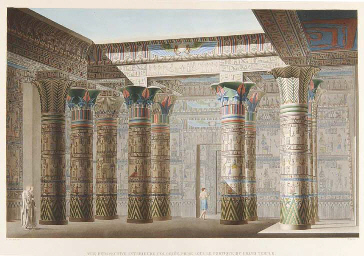
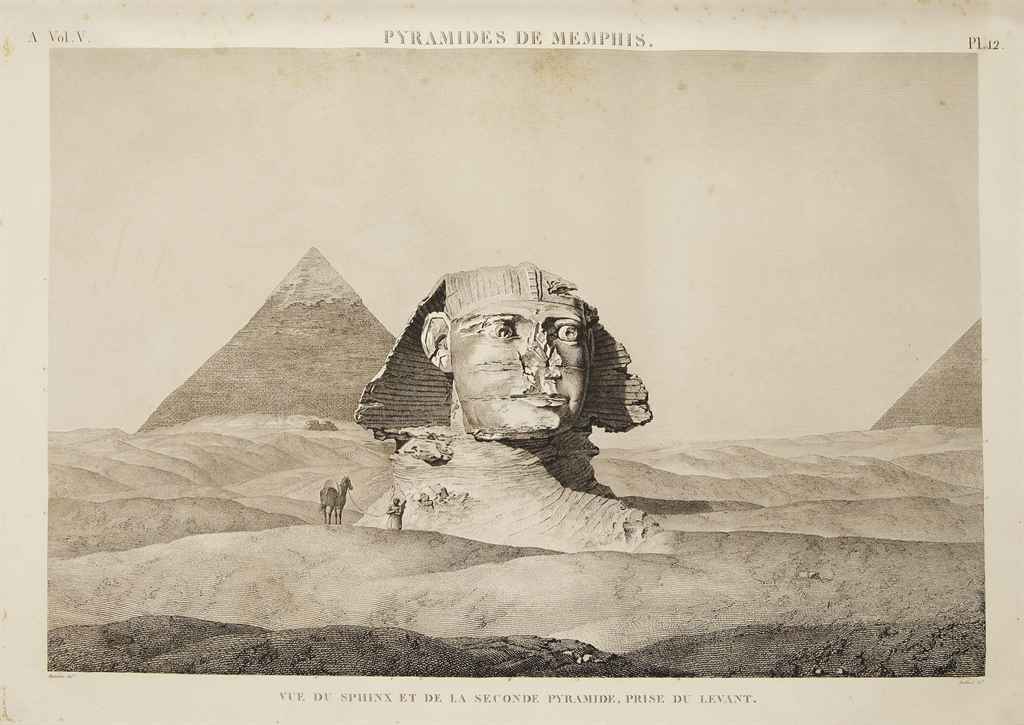
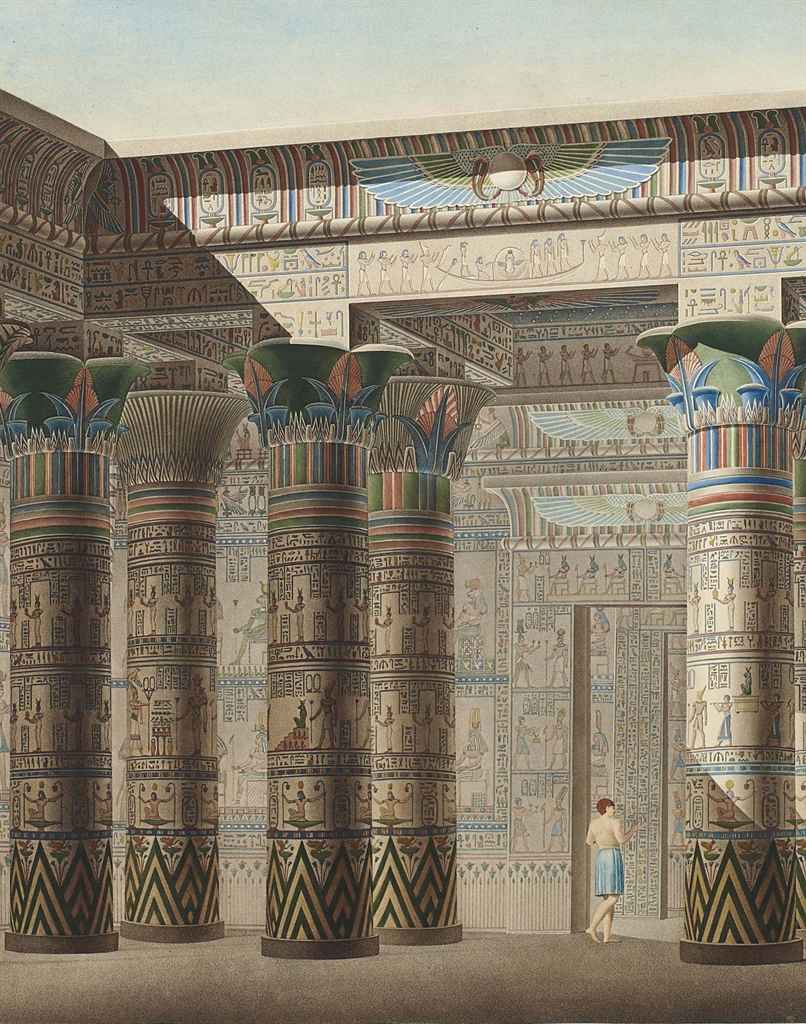
.jpg?w=400)


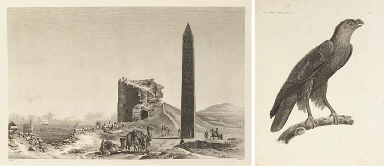
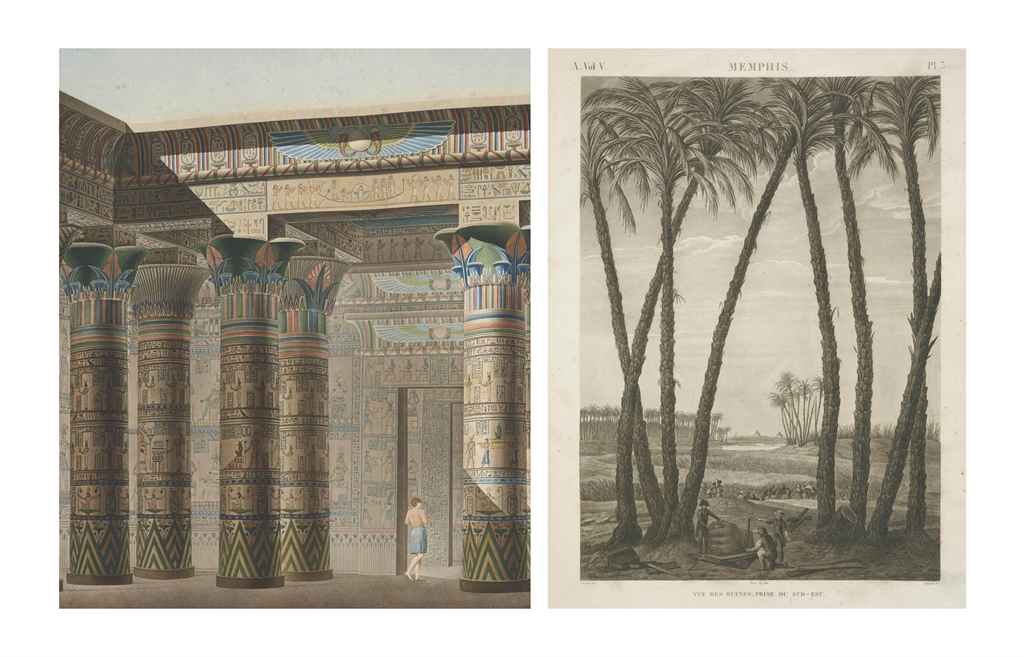



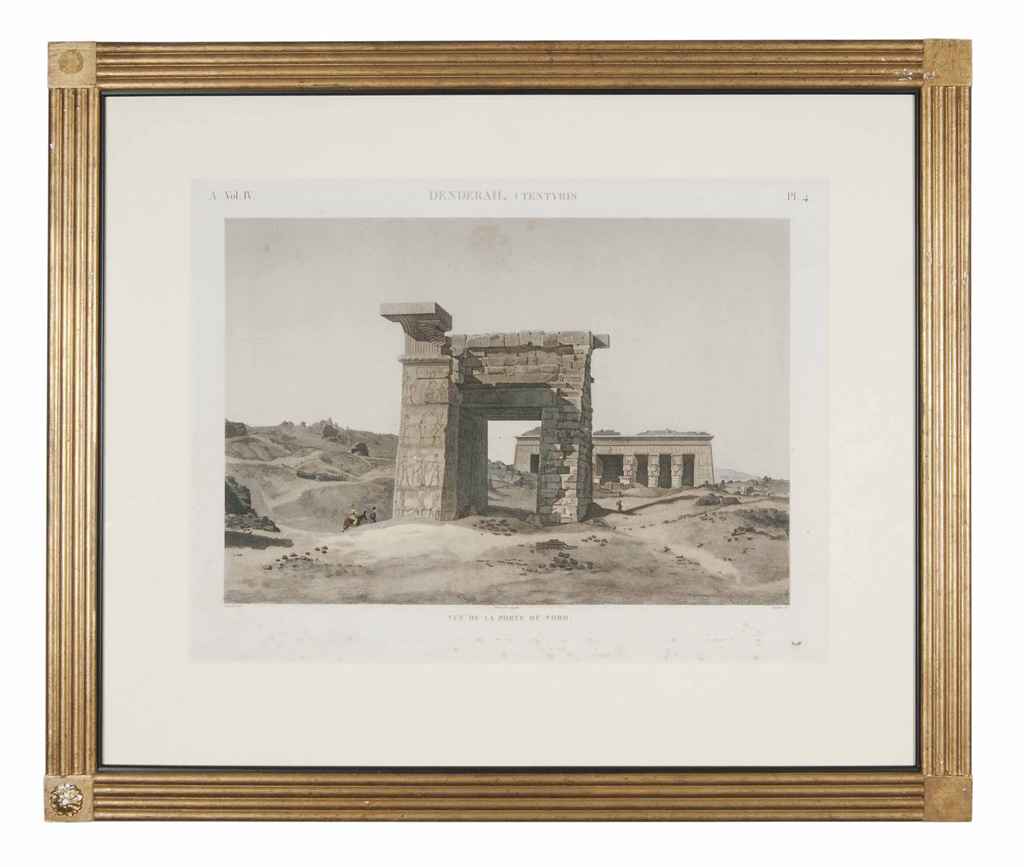
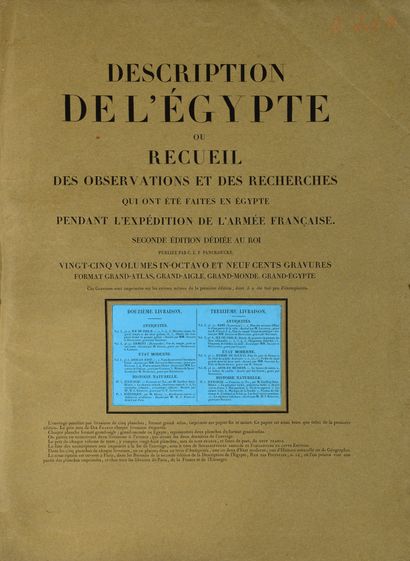
Testen Sie LotSearch und seine Premium-Features 7 Tage - ohne Kosten!
Lassen Sie sich automatisch über neue Objekte in kommenden Auktionen benachrichtigen.
Suchauftrag anlegen